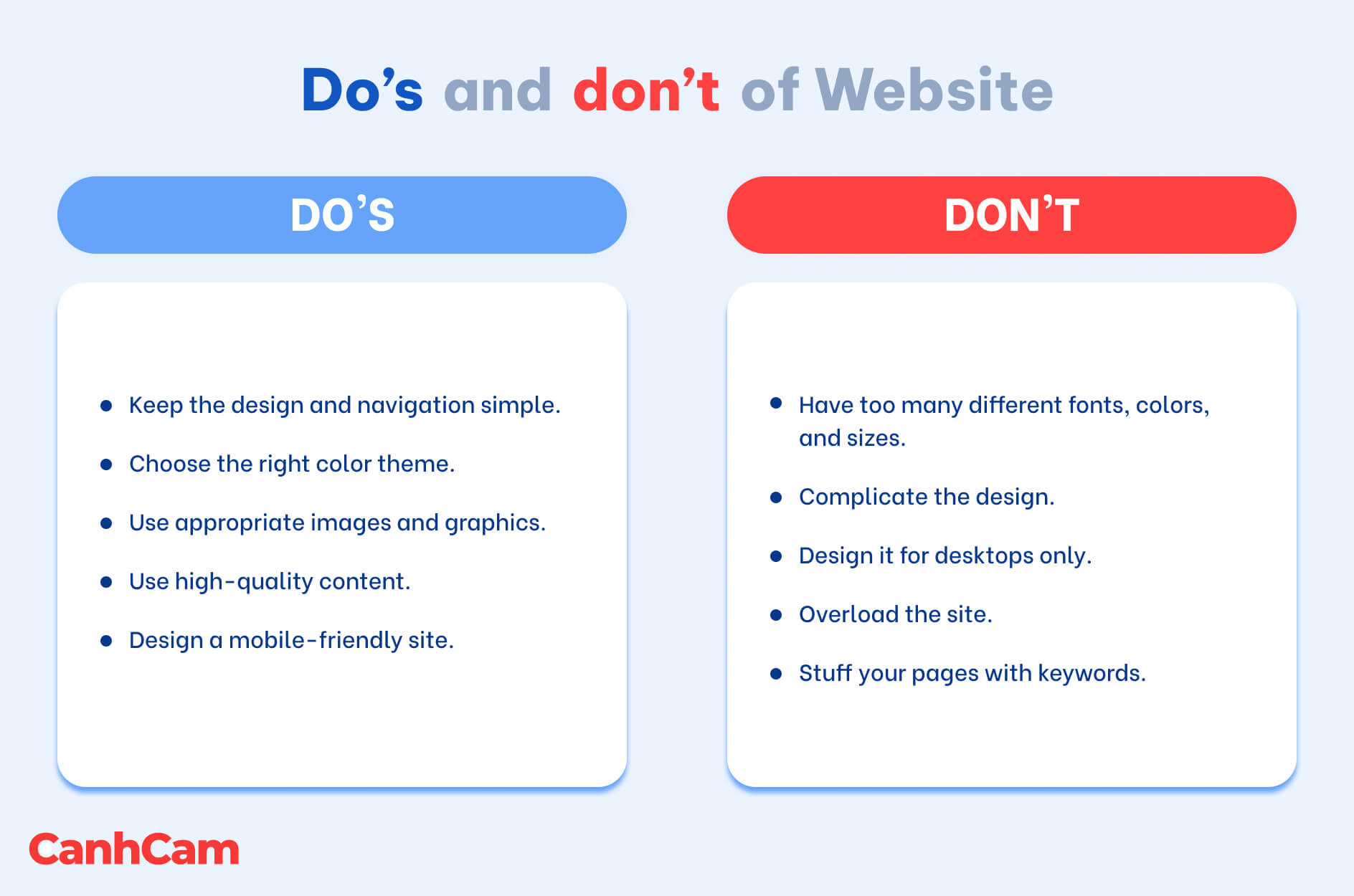Today, creating a website is accessible to most of us thanks to the development of Content Management Systems (CMS). Among the best-known are WordPress and the online platform Wix.
However, diving headlong into technical implementation is not enough to create a good website that will arouse the interest of Internet users. Several key elements that should not be overlooked will allow you to put a relevant website online and thus generate qualified traffic.
In this article, we'll explore the importance of website design elements to help you create a website that looks great and drives results.
What are the Elements of Website Design?
Website design elements are the building blocks that make up a website. They include both the visual components, like images and fonts, and the functional aspects, like navigation menus and buttons. These elements work together to create the overall user experience (UX) of a website.
The Key Elements of Web Design
Let's break down the essential components of effective website design to ensure our website stands out in today's competitive landscape.
1. Navigation
Navigation is like a roadmap that guides users through your website. It should be intuitive and easy to understand, allowing visitors to find the information they need quickly. Clear menus, breadcrumbs, and search functionality are essential components of effective navigation design.
2. Layout and Structure
The layout and structure of your website dictate how information is presented to visitors. A clear and organized layout facilitates easy comprehension and navigation. Experiment with different layout options and consider implementing grid systems to maintain consistency and visual harmony.
3. Color Scheme and Typography
The choice of colors and fonts can significantly impact the overall look and feel of your website. Utilize color psychology to evoke the desired emotions and reactions from your audience. Similarly, opt for fonts that are legible and align with your brand identity for a cohesive design.
4. Images and Graphics
Visual elements such as images and graphics play a pivotal role in capturing attention and conveying messages effectively. Invest in high-quality visuals that resonate with your audience and complement your content. From photographs to illustrations, leverage visuals to enhance the visual appeal of your website.
5. Whitespace
Whitespace, also known as negative space, is the empty space between elements on a webpage. While it may seem insignificant, whitespace plays a crucial role in improving readability and visual clarity. Embrace whitespace in your design to create breathing room and draw attention to key elements.
6. Responsive Design
With the proliferation of mobile devices, responsive design has become imperative for ensuring a seamless user experience across various screen sizes. Implement responsive design techniques to adapt your website's layout and content dynamically, providing an optimal viewing experience for users on smartphones, tablets, and desktops.

7. Call-to-Action (CTA) Buttons
CTA buttons serve as prompts for users to take desired actions, such as making a purchase or signing up for a newsletter. Design eye-catching CTA buttons that stand out on your website and compel visitors to click. Pay attention to placement, color, and copy to maximize the effectiveness of your CTAs.
8. Loading Speed Optimization
In today's fast-paced world, users expect websites to load quickly. Slow loading times can lead to frustration and high bounce rates. Optimize your website's loading speed by minimizing HTTP requests, optimizing images, and leveraging caching techniques to deliver a seamless browsing experience.
9. Accessibility
Accessibility is about ensuring that your website is usable by people of all abilities, including those with disabilities. Incorporate accessibility features such as alt text for images, keyboard navigation, and proper heading structure to make your website more inclusive and accessible to everyone.
10. User Experience (UX)
User experience encompasses all aspects of the user's interaction with your website. By understanding user behavior and preferences, you can design a website that caters to their needs and expectations. Prioritize simplicity, consistency, and usability to create a positive and memorable user experience.

11. Branding Elements
Your website serves as a digital representation of your brand identity. Incorporate branding elements such as logos, colors, and fonts consistently across your website to reinforce brand recognition and establish a strong brand presence online.
12. Interactive Elements
Interactive elements such as sliders, quizzes, and forms can enhance user engagement and foster interactivity. Experiment with different interactive features to captivate your audience and encourage active participation.
13. SEO-Friendly Design
An SEO-friendly website design ensures that your website ranks well in search engine results and attracts organic traffic. Incorporate SEO best practices such as optimized metadata, clean URL structures, and mobile-friendly design to improve your website's visibility and search engine rankings.
Conclusion
In conclusion, effective website design is essential for success in today's digital landscape. By focusing on key design elements and incorporating best practices, we can create a website that not only looks great but also drives results for our business. Let's take the insights gained from this guide and apply them to our own website to achieve success online.

